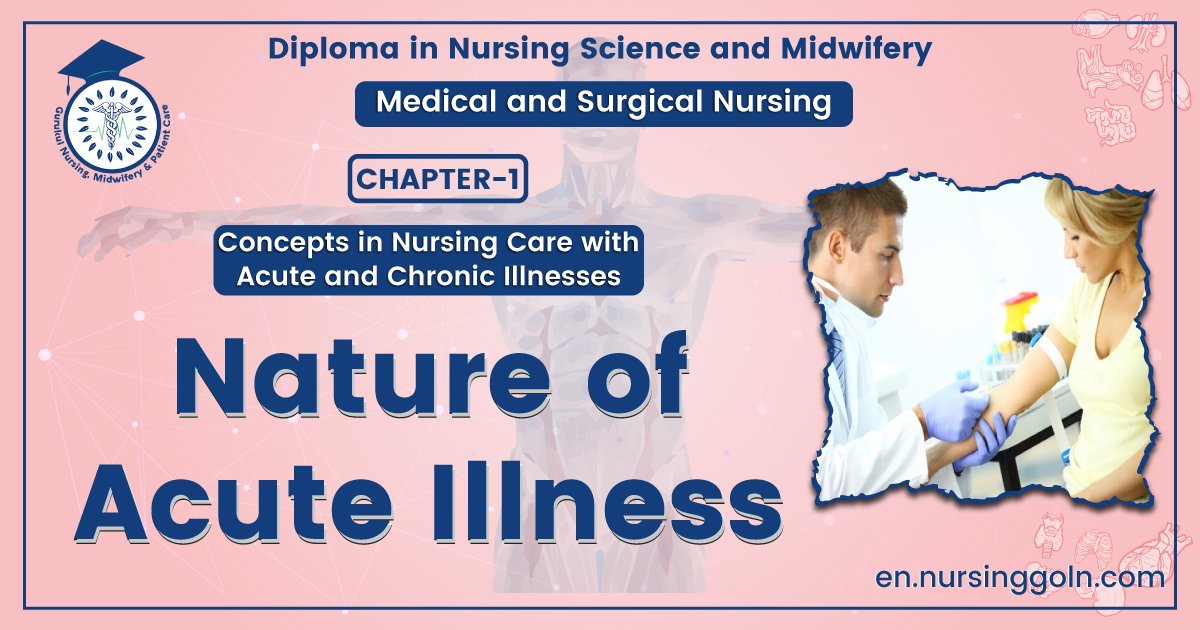Nature of Acute Illness -This course is designed to understand the concept of community health nursing: nurses’ roles and interventions in family health, school health, occupational health, environmental health, elderly health care, gender issues, disaster management and principles and terminology of epidemiology. The aim of the course is to acquire knowledge and skills in community health nursing.

Nature of Acute Illness
A disease or disorder that lasts a short time, comes on rapidly, and is accompanied by distinct symptoms.
Or,
Disease which occurs suddenly and last for a short period is called as acute disease/ illness. Two common examples are colds and the flu.
Characteristics /Nature of Acute Illness:
An acute illness has the following characteristics:
- Onset is usually abrupt and from a single cause
- Develops quickly and worsens rapidly, such as an infection, trauma or injury
- Usually isolated to one bodily area
- Can be diagnosed and responds to treatment
- Acute pain stops when the illness is healed
- May heal by itself or can be treated and returned to normal within a few days or up to three months
- If it lasts longer than three months, it may be the start of a chronic illness

Examples/Types of Acute Illnesses
1. Common short-term infections such as-
- Colds,
- Flu,
- Strep throat,
- Acute sinusitis,
- Ear infection and
- Bladder infection

2. More severe diseases such as-
- Pneumonia (severe lung infection),
- Acute bronchitis (infection of airways to the lungs),
- Acute disseminated encephalomyelitis (viral infection resulting in inflammation of the
- brain or spinal column),
- Acute respiratory distress syndrome (severe condition of lung failure), and
- Acute lymphocytic leukemia (a rapid-growing cancer that starts in the bone marrow)
3. Physical injury such as-
- A cut injury, broken bone, burn or trauma
4. Organ failures such as-
- A heart attack or acute kidney failure
Read more:
